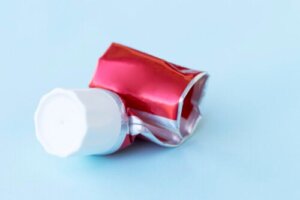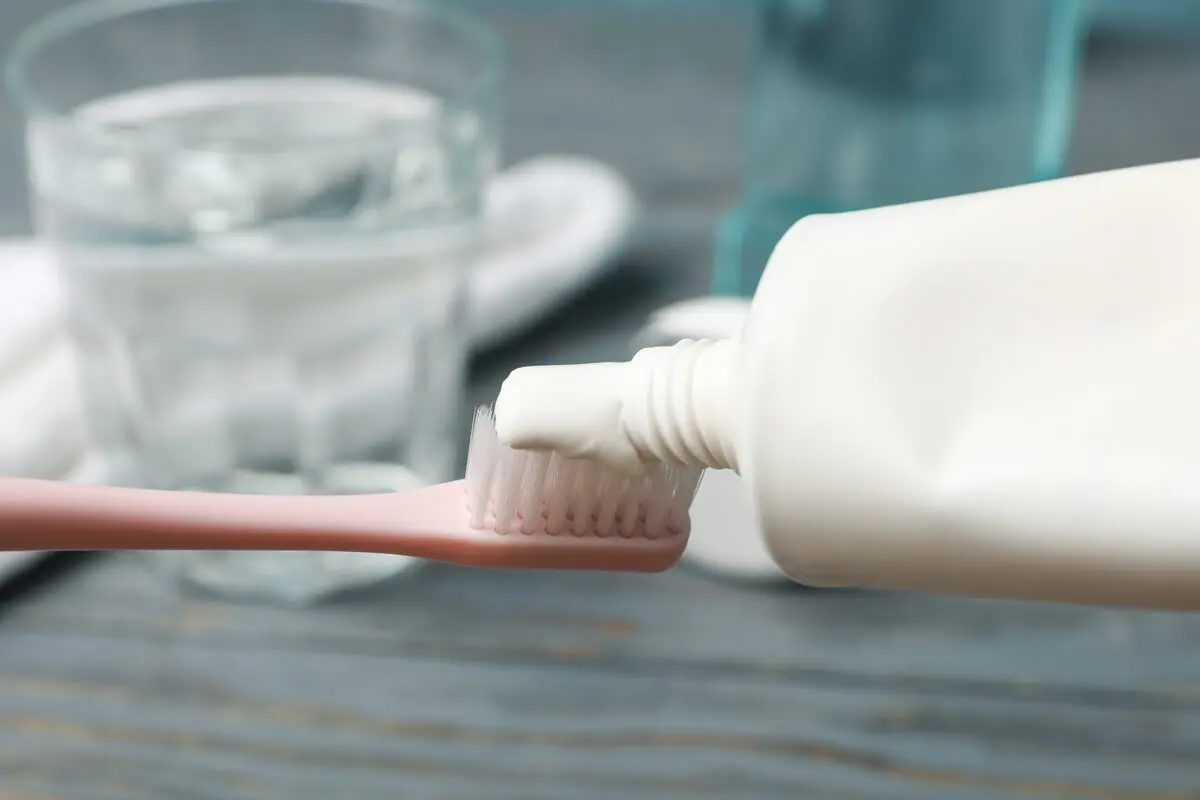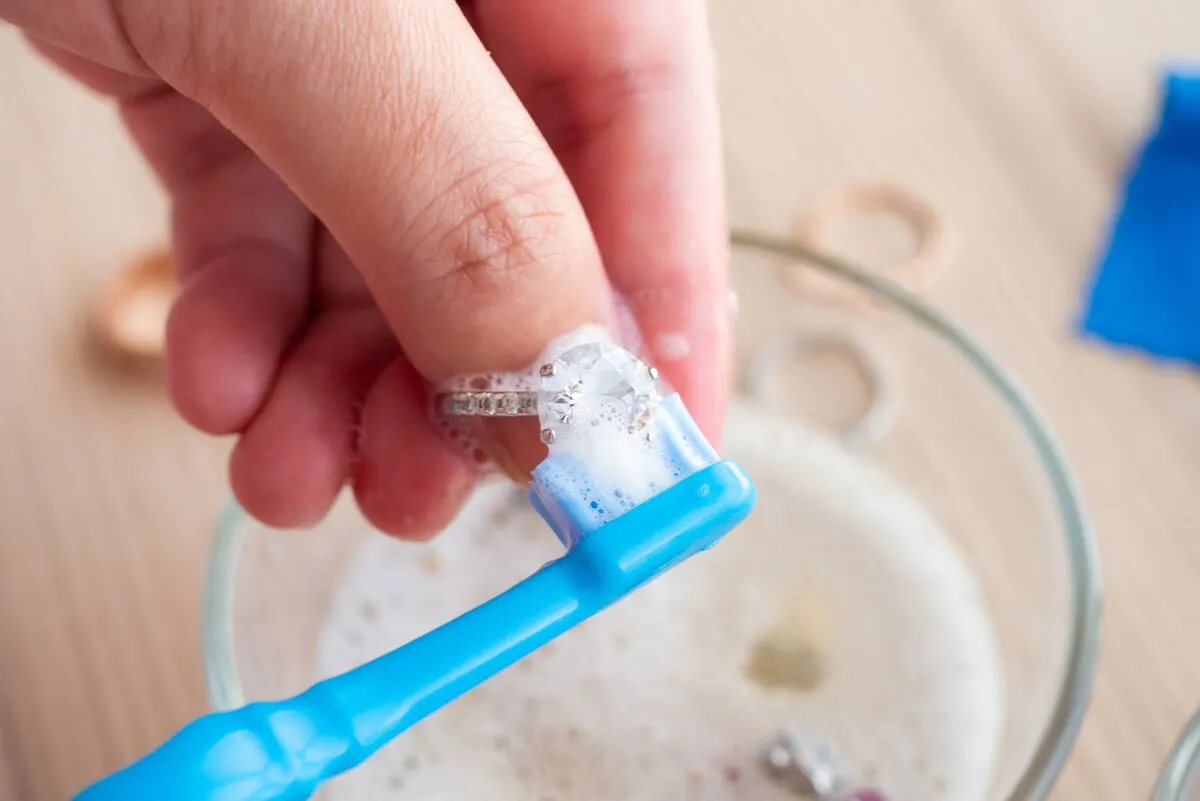Can I Use an Expired Toothpaste?


Written and verified by the dentist Vanesa Evangelina Buffa
It’s rare for a tube of toothpaste to last more than 2 years. However, you may find a sample that was given to you at a hotel or dental visit and wonder if you can use the expired toothpaste.
The expiration date of toothpaste is usually 2 years after its manufacture date. This information is printed on the box and on the tube.
After this time, the product begins to lose its properties. If you use expired toothpaste, it will have a strange taste and consistency. Most likely, it has also lost its ability to prevent cavities.
The expiration date on toothpaste
Tubes of toothpaste that have the American Dental Association (ADA) seal of acceptance must meet certain safety and effectiveness requirements. Both the U.S. Food and Drug Administration (FDA) and the ADA require toothpaste to have an expiration date.
This information is printed on the tube and on the toothpaste box. It usually ranges from 2 to 5 years from the date of manufacture.
The shelf life of toothpaste is determined by the effectiveness of the ingredients they contain. Placing an expiration date on these products allows for informing a margin of time in which the contents of the container will continue to fulfill its purpose.
The toothpaste industry is seeking the development of products that are able to clean teeth, but without wearing them down. Other ingredients are also added to strengthen and protect dental tissues.
In order for toothpaste to fulfill its role and protect the structures, the ingredients it contains must remain fresh. Therefore, if you use expired toothpaste, you will most likely no longer benefit from its properties.
Continuing to use this expired product on a regular basis can have a negative impact on oral health in the long term. The mouth will be left without the protection provided by the active ingredients in the toothpaste and the risk of oral diseases will increase.
Like this article? You may also like to read: Seven Home Remedies for Removing Plaque From Your Teeth
Why does toothpaste expire?
The expiration date of toothpaste is due to its ingredients. After a certain period of time, the active ingredients in these products may lose effectiveness and cease to be beneficial to the mouth.
In general, toothpaste contains 5 active ingredients that are specified on the packaging:
- Fluoride: This is a mineral that helps prevent cavities and strengthens the tooth enamel.
- Abrasive elements to remove plaque and surface stains.
- A flavoring agent or sweetener to give a pleasant flavor to the product; saccharin and sorbitol are the most common.
- A wetting agent gives the paste a smooth consistency and prevents it from drying out.
- A detergent or cleaner creates foam that favors dental cleaning.
In addition, toothpaste may contain other components that give it specific properties. Thus, there are kinds of toothpaste with agents against tooth sensitivity, antimicrobials, with natural herbs, or peroxides that help whiten teeth.
One of the main components of most kinds of toothpaste is fluoride,
As we said, this element helps fight caries and keep teeth healthy. However, after a certain period of time, it can lose its effectiveness in protecting teeth. The other ingredients can separate or crystallize, changing the consistency, color, and taste of the product.

What is the typical shelf life of toothpaste?
Toothpaste has a shelf life of 2 years from its date of manufacture. In this period of time, fluoride retains the ability to strengthen and repair tooth enamel.
However, each brand and product has its own expiration date, so it’s important to pay attention to this information. In general, this information is printed on the packaging and on the tube.
Some kinds of toothpaste that do not contain fluoride may not have an expiration date. However, it’s best to stop using them after 2 years. The rest of the ingredients may denature, and the product may dry out and change color and taste.
Is expired toothpaste safe?
Using expired toothpaste is not necessarily dangerous, but it’s not beneficial either. The purpose of putting toothpaste on your toothbrush is to effectively clean your teeth and prevent cavities. If the toothpaste is old, there is no guarantee that these purposes will be fulfilled.
An expired toothpaste can suffer the following deteriorations:
- It dries inside the knob.
- Its ingredients are separated.
- The fluoride it contains is no longer effective.
- Bacteria or fungi may grow inside.
- It has a strange texture that’s either too fluid or too dry.
For this reason, it’s best to discard expired toothpaste and buy a new tube. In this way, you avoid the risk of exposing your body to a dubious product.
Tips for keeping your toothpaste fresh
Beyond being attentive to the expiration date of toothpaste, it’s also important to pay attention to its storage. In order for the product’s active ingredients to retain their effectiveness, the product must be stored properly.
Here are some things to consider in this regard:
- Close the cap tightly: After using toothpaste, it’s important to put the cap on the toothpaste and make sure it’s tightly closed.
- Keep the edges clean: No residue should be left on the edges of the tube so that dust and dirt do not accumulate.
- Store it in a closed place: If you store the toothpaste in the bathroom, the ideal is to keep it on a closed shelf to avoid contamination with bacteria that tend to proliferate in these environments.
- Store it in a cool environment: Ideally, these products should not be exposed to very high temperatures, as the ingredients could dissociate and become very fluid, thus losing their effectiveness.
We think you may be interested in reading this, too: LED Teeth Whitening: Advantages, Disadvantages, and Care
What should you do with expired toothpaste?
If you discover that your toothpaste is expired, the best thing to do is to no longer use it in your mouth. However, you don’t have to throw it away right away.
You can use this product to polish metals and faucets, remove scratches from walls and clean the bathroom sink. It can also be used to remove residue from the bottom of the iron or even to polish your nails.

Healthy teeth with non-expired toothpaste
Expired toothpaste does not do the job of cleaning and protecting your teeth. You should try to use a fresh product whose active ingredients provide the care you need.
Brushing your teeth every day with toothpaste that has not expired will help keep your teeth clean and healthy. You should also complement your care with dental floss, control your sugar intake and visit your dentist regularly.
Checking the condition of your toothbrush and replacing it every 3 months or sooner, if it’s deteriorated, is another way to take care of your smile. If your dental hygiene items and products are in good condition, you will get more out of them and this will be reflected in better oral health.
Pay attention to the products that help you take care of your mouth. This way, you will keep your smile healthy and radiant!
All cited sources were thoroughly reviewed by our team to ensure their quality, reliability, currency, and validity. The bibliography of this article was considered reliable and of academic or scientific accuracy.
- Hinostroza Ninahuanca, J. L., Serrano Cabana, R. A., & Serrano Cabana, L. D. C. (2019). Características de las pastas dentales para niños comercializadas en Lima, 2019.
- Benzian, H., Holmgren, C., & Helderman, W. V. (2012). Efficacy of fluoride toothpaste over time. Brazilian Dental Journal, 23, 311-314.
- Lippert, F. (2013). An introduction to toothpaste-its purpose, history and ingredients. In Toothpastes (Vol. 23, pp. 1-14). Karger Publishers.
- Picó Monllor, J. A. (2016). Cosmetotecnia de los dentífricos. Relevancia del comportamiento reológico.
- Contreras Rosales, J., De la Cruz Cardoso, D., Castillo Chaires, I., & Arteaga Mejía, M. (2014). Dentífricos fluorurados: composición. Vertientes. Revista Especializada en Ciencias de la Salud, 17(2).
- Escalante-Medina, R. P., Asmat-Abanto, A. S., & Ruiz-Barrueto, M. A. (2019). Efecto antibacteriano de una pasta dental con xilitol sobre Streptococcus mutans en saliva de gestantes. Revista Cubana de Estomatología, 56(4), 1-12.
- Córdova-López, O., Hermoza-Moquillaza, R. V., Yanac-Calero, D., & Arellano-Sacramento, C. (2019). PPM de flúor rotulado y analizado en pastas dentales pediátricas comercializadas en Lima-Perú. Revista Estomatológica Herediana, 29(4), 285-290.
- Soysa, N. S., Cury, J. A., & Alles, C. N. R. A. (2019). Fluoride concentration and stability in commonly used dentifrices in Sri Lanka. Brazilian Journal of Oral Sciences, e181244-e181244.
This text is provided for informational purposes only and does not replace consultation with a professional. If in doubt, consult your specialist.








